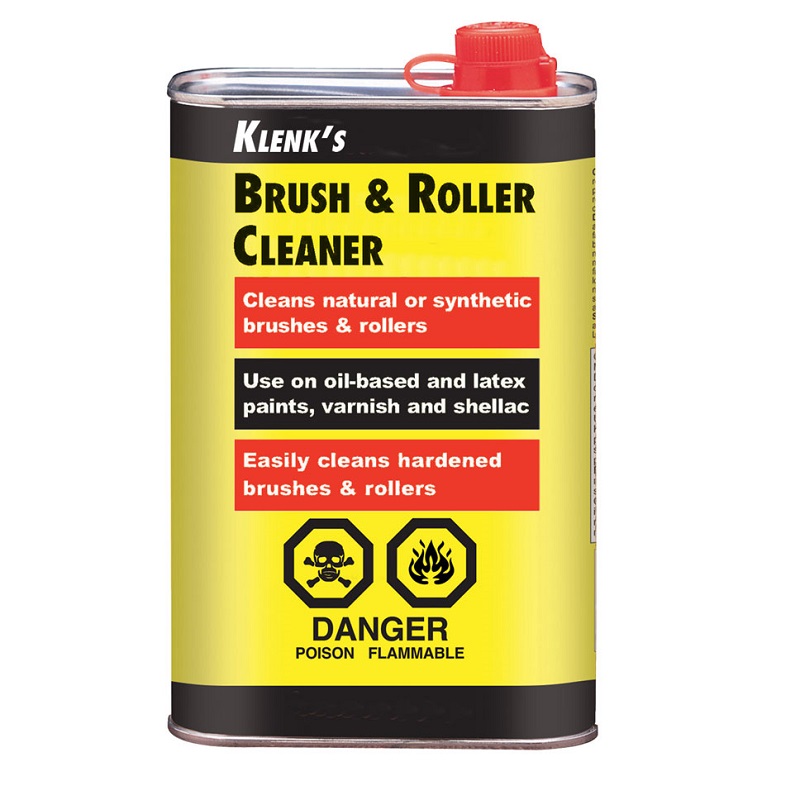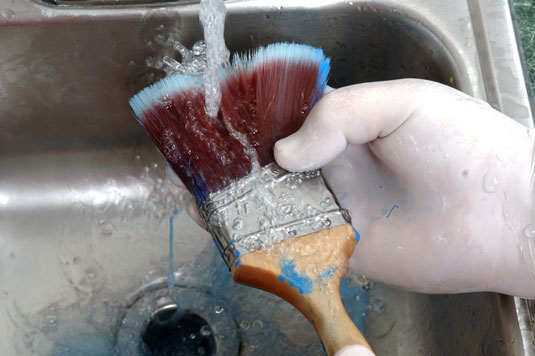A good paint project in the winter brightens up your home and makes everything fresh and clean. However, when you are finished with the fun stuff, you still must clean up your brushes, rollers, and paint-filled rinse water. Many people just pour all residue down the drain. This action can cause environmental issues and plumbing problems. For any paint left over, check with your local disposal methods for proper disposal of paint.
Once the vinegar is boiling, take the paint brush by the handle and dip the bristles in the water. Push them back and forth on the bottom of the saucepan, imitating brush strokes. You need to remove the brush from the vinegar every 15 seconds to 20 seconds and see how the bristles are cleaning up.
- Gather your materials: a wire paint comb, latex gloves, the used paintbrush, and the.
- Hot water and mild liquid dish soap to clean paint brushes that have been used to apply latex paint Immerse the paint brush in the solvent. Stir the solvent with the brush for about 10 seconds.
Cleaning Paint Brushes
Cleaning Latex Paint Brushes
- Make sure your paintbrush has all excess paint removed by scraping it against the inside rim of the paint can and work the remaining paint into a newspaper.
- Read the paint can and use the solvent suggested for cleaning. Latex paint can usually be cleaned with soap and water. Oil-based paints require stronger solvents.
- Immerse the brush in the appropriate solvent. Work the paint free of the bristles of the brush.
- When you believe the brush to be free of the paint, dip it into a pail of clean water to rinse.
- Wrap the paintbrush in heavy paper to help retain its shape.
Disposing of the Dirty Paint Water
When cleaning up from your winter painting project, here are the steps to clean and properly dispose of paint-filled water.

- Set the bucket of dirty paint rinse water to the side. A warm, dry climate works best.
- You can wait for the water to evaporate and the paint solids to settle on the bottom of the bucket. When the water evaporates, peel out the dried paint residue and dispose of the hardened paint in a trash bag with your other trash.
- Or, if you don’t want to wait for the water to evaporate, you can set the rinse water bucket to the side and allow the paint solids to settle on the bottom of the bucket. Then carefully tip the clear water at the top of the bucket onto a flat, grassy area that is away from sewer and storm drains, other waterways and wells. Then allow the liquids to dry to solid form and dispose of them in your trash bag.
Paint solids from dirty paint rinse water over time will clog up your plumbing, damaging drains and piping. Making sure to dispose of your dirty paint water properly will save you time and money.
Pouring dirty paint rinse water down your drains can cause build-up and plumbing issues.Already dumped your dirty paint water down the drain? Call the plumbing professionals at Estes Services. We will help you with any plumbing maintenance or crisis.
Haven't any of you had any professional training at all?
Cleaning Latex Paint Brushes Septic Tank
I don't want to steal your thunder Kelly, but this is not Best Practice.
Don't ever put paint thinner into plastic. It will melt most kinds. Why risk a mistake? Old glass salsa jars exist for brush cleaning. label one, put some glass marbles like the flower arranging ones into the bottom to work the brush against. (Plain, not coated with shiny stuff. It'll dissolve) Trying to clean oil based paints out of brushes by just stirring them around doesn't work. If you're desperate a crumpled piece of window screen will work too but it's hard on bristles so this is not a default. Paint thinner is very flammable and an ugly toxin so you want to keep it stingy and the stuff needs to go to Hazardous Waste Disposal. Wipe those brushes really well!
If you're doing fine arts painting go buy a proper brush cleaning pot. A big size one would be good for pro house painters. Solvent sits in it for weeks and it has a sieve to work the bristles over. Paint solids drop below it. The top keeps fumes in and evaporation almost nill over weeks. Minimal exposure, clean brushes. Now wash them! I wash up to thirty brushes a day in the studio; it's just doing the dishes.

Do NOT use a surfactant/ detergent 'soap'. Use a real soap, a chemically designated soap, with oil or fat in it. You can put it on a cellulose sponge and work the brushes across it to work up a lather, or just work them against your palm. If you use bar soap swipe the brushes across it. The soap cuts the oil, and the fat base conditions the bristles.If you wiped out the paint and rinsed in thinner properly there's very little to wash out. More like a post gym shower then wrestling gunk. You don't want paint in a sink drain or on the back patio. Rinse well. If you do this correctly you'll get to wear brushes out instead of throwing them away. And bristles are chosen for this exposure so they'll get better. It's just like washing your hair. Squeeze out the water and shape them, air dry.

This works for synthetic brushes too. Do not leave soap in the bristles as it will contaminate your paint next time and make a bad paint film. As for exotic paints like epoxy? Yes, use nitrile gloves and a respirator! Outside. But if the stuff is hydrocarbon based a fat soap should work too. Acetone on brushes will kill them fast, so make sure thats a really Best Practice. Again- a soap may work better. Most bristles need the conditioning.
If your brushes start to get that gunky icky feeling, soaking them in that inexpensive liquid oil soap from the grocery store (Also best for regular washing after painting) is like a spa treatment. Leave them in for two or three days. It's magic! Paint in the ferules is a ruined brush, but as regular maintenance this is amazing. I have ten year old mongoose thats still sweet. I also paint a lot.
Do not use soap on watercolor brushes. Just rinse.
This is the method professional painters use; It keeps solvent use to an absolute minimum. Reusing a cup or 12 ounces of thinner instead of blowing through gallons of it reduces exposure and that stuff has lead in it. Among other scary things. Don't use it on skin either. Paint'll fall of in 48 hours if soap or olive oil doesn't get rid of it.
Even if you use a thinner only system like the guys who paint cars using industrial paints, a cleaning pot will use less thinner and reduce your chemical exposure. They can be used in series. You can eyeball them at the big online art supply stores, and I shop at industrial supply so don't think they don't interchange. ;-D I'll try to post instructions for the homemade version.

